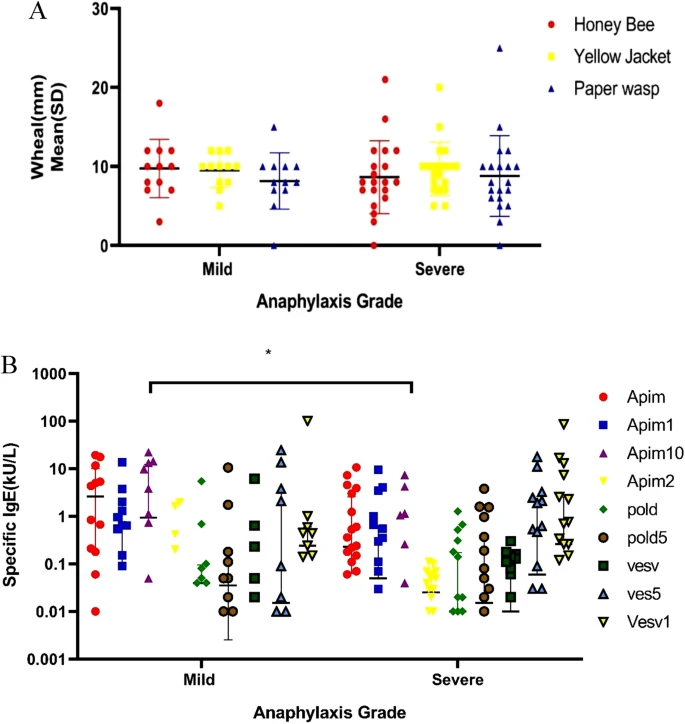Bemanian, M.H., Shokouhi Shoormasti, R., Arshi, S. et al. Allergy Asthma Clin Immunol 20, 22 (2024). https://doi.org/10.1186/s13223-024-00885-9
Abstract
Background
The poly-sensitization to Hymenoptera venom makes it difficult to select genuine allergens for immunotherapy and increases patients’ costs. The objective of this study was to determine the culprit allergen in dual or triple-sensitized patients to three Hymenoptera venoms through molecular diagnosis and evaluating the results of incorporating the molecular diagnosis with skin tests.
Methods
Thirty-two patients with anaphylactic reactions and dual or triple-sensitization to Hymenoptera venoms in skin tests entered this study. IgE-sensitization to whole extracts and molecules of Apis mellifera (Api m), Vespula vulgaris (Ves v), and Polistes dominulus (Pol d) was evaluated utilizing ALEX or ImmunoCAP.
Results
Twenty-nine patients (90.6%) were male. IgE-sensitization to at least one of the allergenic molecules related to Apis mellifera, Vespula vulgaris, and Polistes dominulus was seen in 59.4, 53.1, and 21.9%, respectively. Among 32 patients, 14 (43.8) and 8 (25%), were mono-sensitized to Api m and Ves v components in ALEX, respectively. Double sensitization to Hymenoptera was identified in 18.8% of patients in ALEX. Api m 1+/Api m 2−/Api m 10− and Ves v 1+/Ves v 5+ demonstrated the most prevalent sensitizations patterns in our patients.Conclusions
The molecular diagnosis of IgE-sensitization to Hymenoptera venoms can be valuable, especially in patients who show dual or triple-sensitization in skin tests, as the ALEX results revealed mono and double-sensitization to Hymenoptera venoms in 22 and 6 patients, respectively. Regarding the high cost and adverse reactions of venom immunotherapy, especially for two or three venoms, incorporating the molecular diagnosis alongside skin tests for accurate diagnosis of the culprit venom could help decrease costs for patients.


No comments:
Post a Comment